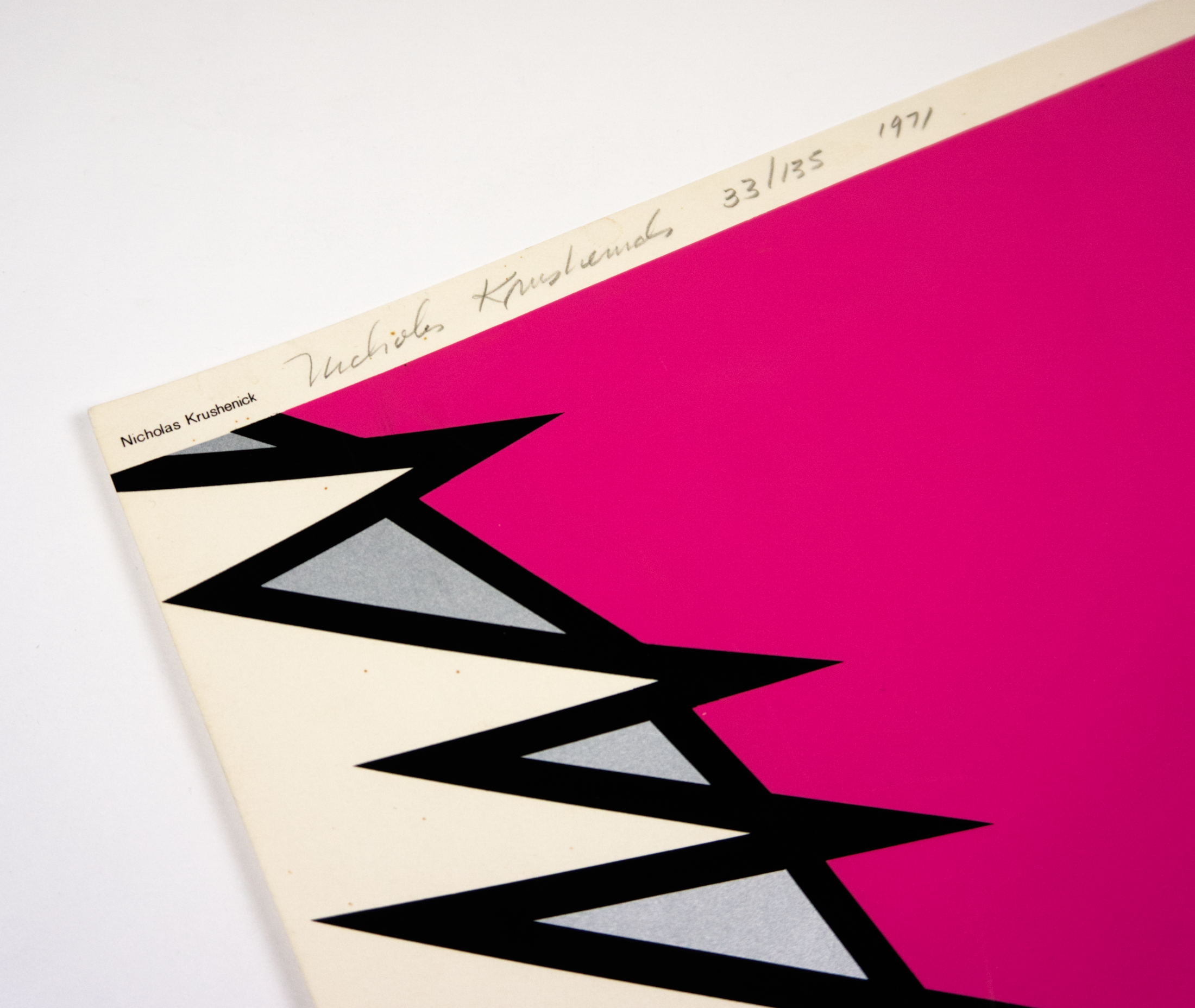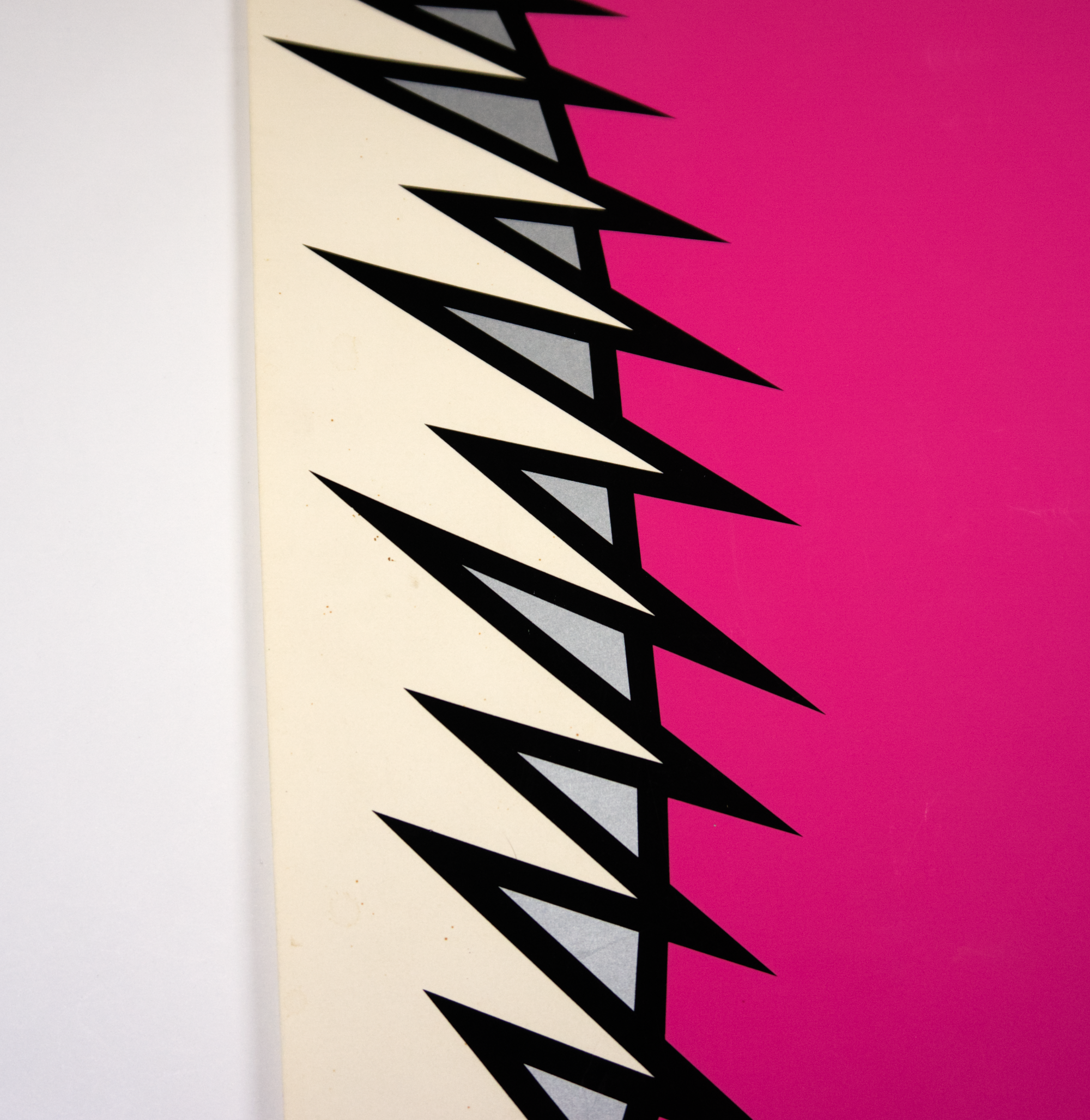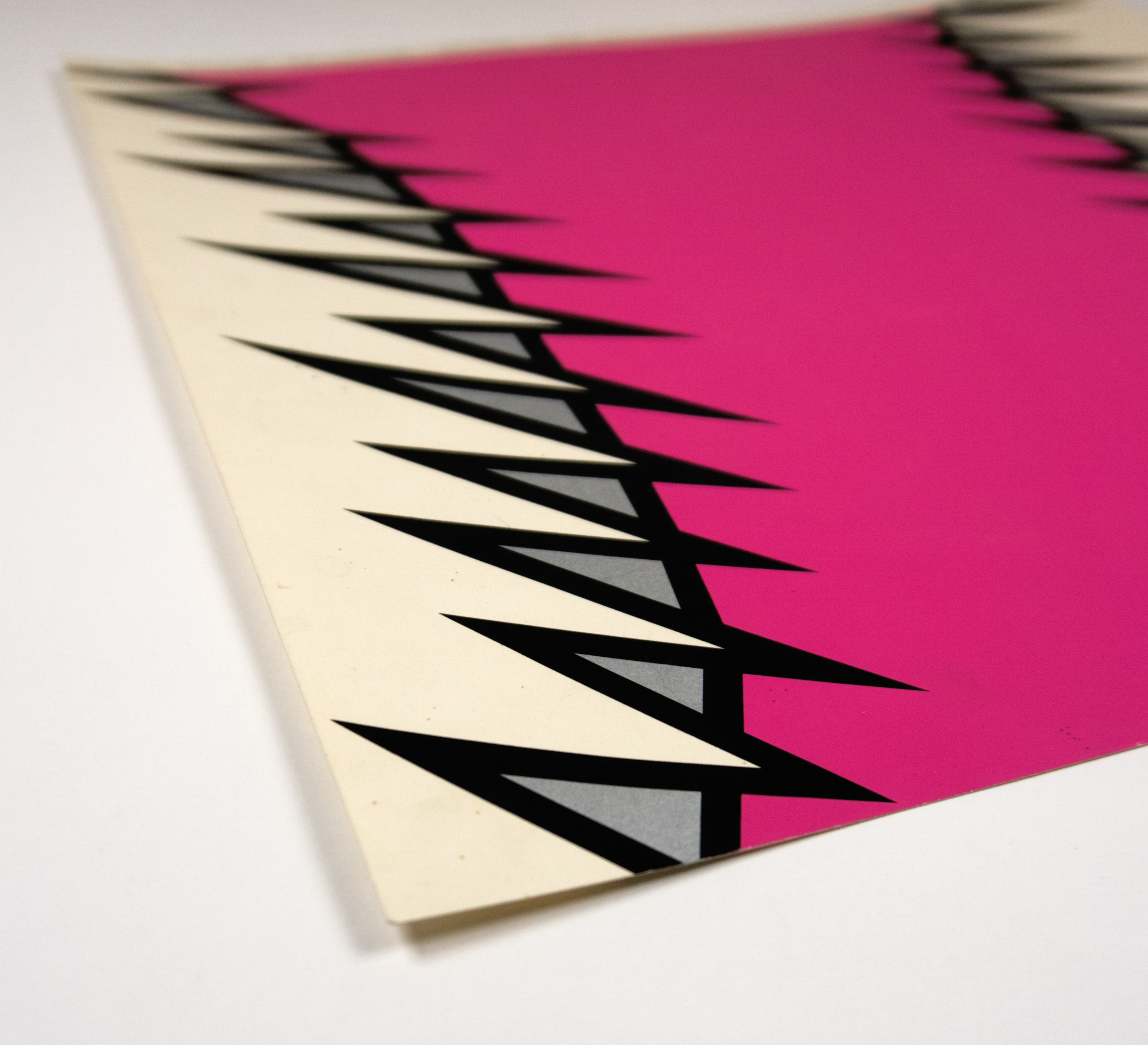 Image 1 of 5
Image 1 of 5

 Image 2 of 5
Image 2 of 5

 Image 3 of 5
Image 3 of 5

 Image 4 of 5
Image 4 of 5

 Image 5 of 5
Image 5 of 5






Nicholas Krushenick: Composition (1971)
Limited edition print
Artist: Nicholas Krushenick (1929-1999)
Title: Composition
Publication date: 1971
Publisher: Edition Domberger, Stuttgart.
Medium: Screenprint on heavy white wove paper, enhanced with silver ink.
Dimensions: 43,5 x 42 cm / 17 x 16,5 in.
Edition: Edition of 135
Markings: Hand-signed and numbered by the artist in pencilAbout
Issued from “Domberger Siebdruck-Kalender Portfolio”, a 1972 calendar including one artwork for each month by several artists: Robert Indiana, Frank Werner, Richard Anuszkiewicz, Nicholas Krushenick, Horst Scheffler, Raimond Girke, among others.
Special limited edition of 135 copies. From this edition, an unsigned and unnumbered version of approximately 2,800 copies was produced.
Nicholas Krushenick (1929-1999)
Nicholas Krushenick (1929–1999) was an American painter known for his bold, hard-edged style that blended elements of Pop Art, Op Art, and Abstract Expressionism. His work is distinguished by flat, vibrant color fields outlined in thick black contours, creating dynamic, almost cartoon-like compositions. Unlike traditional Pop artists who borrowed imagery from popular culture, Krushenick developed a wholly abstract visual language that referenced both commercial design and high modernist painting.
Emerging in the 1960s, Krushenick played a crucial role in bridging the gap between abstraction and popular aesthetics. He co-founded the Brata Gallery, a key artist-run space in New York, and his work was exhibited at major institutions like the Museum of Modern Art (MoMA) and the Whitney Museum. His paintings often featured jagged, rhythmic forms that conveyed energy and movement, making them visually striking and highly distinctive. Although his work shared similarities with both Pop and Op Art, he resisted easy classification, forging a unique artistic path.
Krushenick’s legacy endures through his influence on contemporary artists who explore bold color, graphic patterns, and the fusion of abstraction with commercial aesthetics. His work is held in major museum collections, and his innovative approach continues to inspire new generations of painters and designers. While he remained somewhat outside the mainstream art movements of his time, his fusion of modernist rigor with playful, high-energy visuals has cemented his place as a pioneering figure in postwar American art.
Condition: Signs of wear and age. Some marks and creases on the silkscreen and a small defect on the lower right margin.
Provenance: Acquired at auction. Ownership: Monginho Collection.
Limited edition print
Artist: Nicholas Krushenick (1929-1999)
Title: Composition
Publication date: 1971
Publisher: Edition Domberger, Stuttgart.
Medium: Screenprint on heavy white wove paper, enhanced with silver ink.
Dimensions: 43,5 x 42 cm / 17 x 16,5 in.
Edition: Edition of 135
Markings: Hand-signed and numbered by the artist in pencilAbout
Issued from “Domberger Siebdruck-Kalender Portfolio”, a 1972 calendar including one artwork for each month by several artists: Robert Indiana, Frank Werner, Richard Anuszkiewicz, Nicholas Krushenick, Horst Scheffler, Raimond Girke, among others.
Special limited edition of 135 copies. From this edition, an unsigned and unnumbered version of approximately 2,800 copies was produced.
Nicholas Krushenick (1929-1999)
Nicholas Krushenick (1929–1999) was an American painter known for his bold, hard-edged style that blended elements of Pop Art, Op Art, and Abstract Expressionism. His work is distinguished by flat, vibrant color fields outlined in thick black contours, creating dynamic, almost cartoon-like compositions. Unlike traditional Pop artists who borrowed imagery from popular culture, Krushenick developed a wholly abstract visual language that referenced both commercial design and high modernist painting.
Emerging in the 1960s, Krushenick played a crucial role in bridging the gap between abstraction and popular aesthetics. He co-founded the Brata Gallery, a key artist-run space in New York, and his work was exhibited at major institutions like the Museum of Modern Art (MoMA) and the Whitney Museum. His paintings often featured jagged, rhythmic forms that conveyed energy and movement, making them visually striking and highly distinctive. Although his work shared similarities with both Pop and Op Art, he resisted easy classification, forging a unique artistic path.
Krushenick’s legacy endures through his influence on contemporary artists who explore bold color, graphic patterns, and the fusion of abstraction with commercial aesthetics. His work is held in major museum collections, and his innovative approach continues to inspire new generations of painters and designers. While he remained somewhat outside the mainstream art movements of his time, his fusion of modernist rigor with playful, high-energy visuals has cemented his place as a pioneering figure in postwar American art.
Condition: Signs of wear and age. Some marks and creases on the silkscreen and a small defect on the lower right margin.
Provenance: Acquired at auction. Ownership: Monginho Collection.

